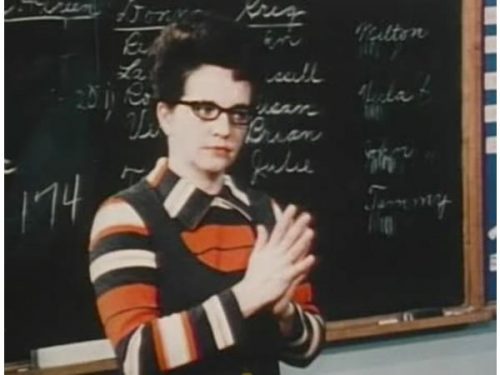Iowans know Jane Elliott as a local teacher who became a diversity trainer, motivational speaker, and racial justice activist. Along the way, she pioneered the corporate diversity training movement. And her work inspired books, films, and other media. I’ve seen one of her training sessions in-person here in Iowa City. Let’s think a bit about Jane Elliott and her legacy.
Blue Eyes and Brown Eyes
I think most Iowans know the story, but many others don’t.
Jane Elliott did an experiment in her class the day after the Martin Luther King Jr. assassination. She divided her students into blue-eyed and brown-eyed groups. Elliott designated the brown-eyed group as superior. And she gave them extra privileges: better access to playground equipment, incentives to play only with brown-eyed children, extra recess time, more food, etc. Then she separated the two groups – allowing only brown-eyed children to sit at the front of the room and providing them with separate water fountains.
When students resisted, she came up with various myths about the link between brown eyes and superior traits like intelligence. Eventually students embraced the system. Elliott concluded – and points out in her diversity trainings – that divisions based on race are as arbitrary as divisions based on eye color. And so, people ought to reject those divisions. In like manner, they ought to quit promoting them.
Jane Elliott, Theory, and Trainings
As I said earlier, Jane Elliott pioneered the field of corporate diversity training. She does trainings for dozens of companies, some with household names – AT&T, IBM, et al. She has also done trainings for the U.S. government. The one I attended was held at The Graduate Hotel in Iowa City.
In many ways, this is a bad thing. I’ve been to a lot of these trainings, even many in the ‘tough love’ style Elliott prefers. And most of these trainings suck. Really badly! But I enjoyed Elliott’s training. She’s entertaining, and I think some attendees really learned something from it.
With that said, it’s hard to ignore the fact that the theory behind the training doesn’t really hold up. Yes, race is socially constructed partially on the basis of arbitrary physical traits. But race, of course, serves a function within a capitalist society. It justifies both primitive accumulation and ongoing capital accumulation.
If a person really wants to understand race, they first need to understand this function. We need this background to get at issues of racial privilege. Without that, we remain susceptible to all sorts of errors.
Performance Art, Not Theory
In the end, I evaluate Jane Elliott the same way I evaluate all diversity trainers. First, the theory is bad, and the theory will always be bad. Good theory will always sit at odds with corporate goals. But, second, the performance art might be good. In Elliott’s case, it is good. At times, diversity training even helps a few people. In light of that, we can’t totally dismiss it.
And so, for most people, my advice is to treat these trainings as performance art rather than theory. Sometimes you can enjoy the show, and sometimes it pushes people to act in good ways.
